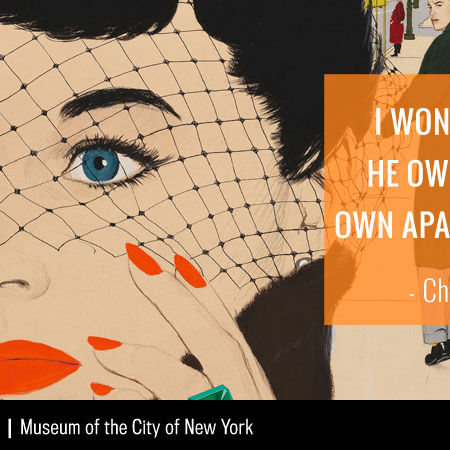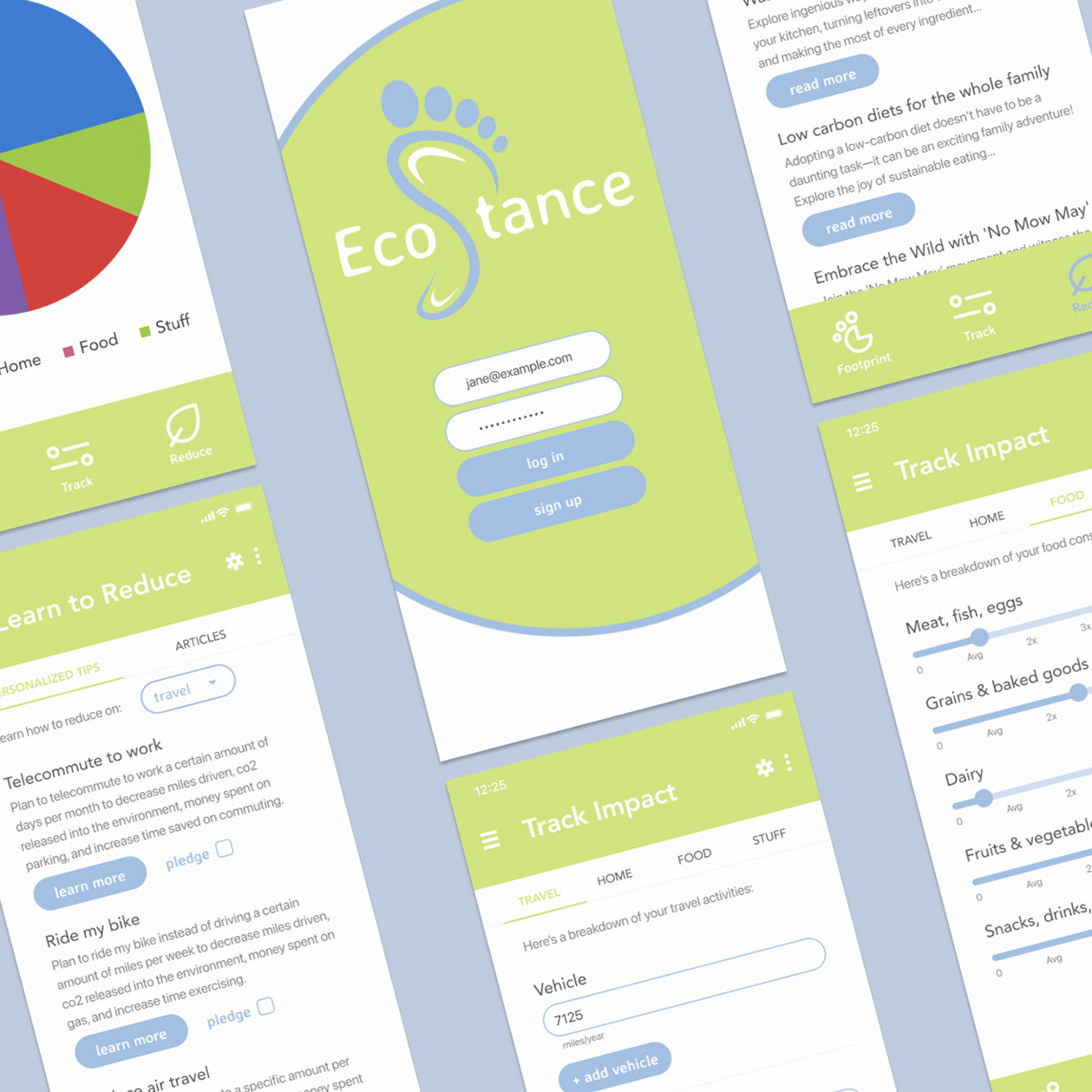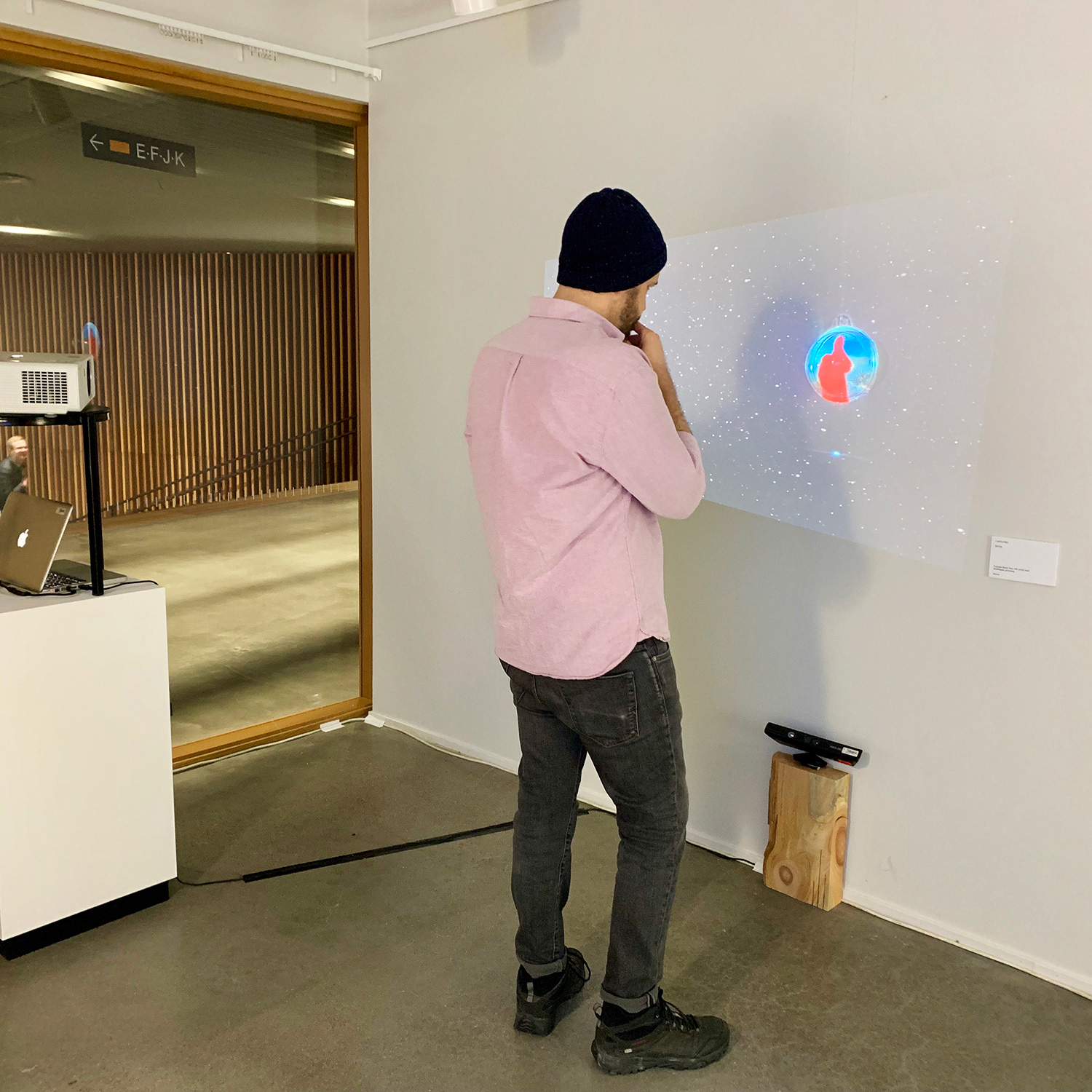Can we break away from anthropocentrism and expand our empathy
by understanding a plant's perspective and its perception of the world?
DESIGNER ROLE:
Visual Designer | Programmer
TOOLS:
Adobe Photoshop & Dreamweaver | HTML/CSS
BACKGROUND:
Plant Sensory Perception in Poetry
A Mile In Their Roots explores this concept through first-plant narratives (a play on first-person), in which their sensory perception is conveyed in the form of poetry. The thesis narrative focuses specifically on five senses from the perspective of plants:
• Proprioception (referred to in this project as gravity)
• Sight
• Smell
• Touch
• Time
The first three are important because they are the closest overlapping senses between plants and human beings. The last two are more complex, with proprioception not being known to most, and time being a proposed sense that I believe should be included in how we think about perception.
Each poem is imagined to be authored by a different plant species with its own unique sensorial connection, as backed by scientific research and my own experimentations with plants respectively. Furthermore, the poetry is complemented by a digital interaction that allows the user to "decode" the displayed text, creating the illusion of translation from a foreign language.
PROCESS & RESEARCH:
This project was informed by many academic papers about plant sensory perception, including studies about plants emitting sound under stress, theories of plant blindness, and even academic writings about perspective-taking. The papers about perspective-taking almost always focused on humans exclusively. Although I initially viewed this as a challenge, in retrospect I realize this actually helped solidify my underlying mission of encouraging the audience to step away from their anthropocentric view and consider the perspective of other life forms.
The BBC article Plants can see, hear, and smell - and respond was the first text I read that presented senses in a way that decoupled the equivalence we are so familiar with between senses and organs. We are used to a certain line of thinking: I can see because I have organs called eyes; I can smell because I have an organ called a nose; etc. But here for the first time, I understood that being able to sense (or process) specific information is not mutually exclusive to a single organ. It can and does manifest as a much more complex system of networks that work together to form sensory perception.
This article also introduced me to David Chamovitz's book What A Plant Knows, one of the most impactful pieces of research, upon which much of this project is heavily based. This book explores the different ways in which plants experience the world, but it does so with solid scientific research.
The book is broken down into six senses: sight, smell, tact, aural, proprioception, and memory. The first four are relatively straightforward, as they belong to the big five we are already familiar with. He leaves out taste since he argues half of it is derived from the ability to smell. The remaining two senses, however, are quite interesting and in my opinion, start to break through the perception defaults we are used to. We don't usually think of memory as a sense, but it without a doubt plays a crucial and irreplaceable role in how we process our surroundings and experience life. It could be argued that it has an organ equivalency in our case, which is the brain.
But more interesting yet is proprioception. I'd even go as far as to argue that proprioception is probably one of the most important senses being covered in both this book and my project. Proprioception, in particular, is especially important because it is a sense shared by both humans and plants. Additionally, in both cases, it does not have an organ equivalency, which might also have something to do with why it's not very well known. In reality, it is argued humans have between 14 to 20 senses, including many less-known ones including proprioception and the vestibular system. The former allows us to know where each part of our body is located in space, while the latter comprises our balance and coordination center.
Now imagine if none of our senses had easily identifiable organs with which they could be paired. This is essentially the case for plants. They are capable of processing largely the same perceptual information as us, like sight, tact, or smell, except they do not have a central brain, nervous system, or corresponding organs in the way we know them.
It is important to note that I used "gravity" for this project instead of proprioception because the experiments I conducted with plants were meant to demonstrate how a plant can re-orient its roots based on knowing where the gravitational pull is coming from. This, by default, requires a plant to be aware of its position in space, also known as the sense of proprioception. Additionally, since I chose acrostic poetry (a poem in which the first letter of each line spells out a specific word), 'gravity' was much more accessible to work with than 'proprioception'.
EXPERIMENTATION:
Before Covid-19 struck, and my program's physical thesis show was moved online, I had envisioned and planned for this project to be a physical installation that would display the final organic results of plant experiments I had been conducting at home, and combined with technology.
The installation was meant to provide a time snapshot meant to visualize the initial four plant senses I had proposed (before I incorporated time). The main experiments I conducted at home addressed the senses of proprioception, scent, and time.
A decoding EXPERIENCE:
In switching gears to a digital final form, one of the ideas I wanted to play around with was providing the audience with a temporary glance of what the plants' experience might be like, based on the different senses and species.
In writing, particularly in poetry, I found a unique tool to communicate factual information derived from research, while providing a more emotional snapshot of what the plants' perspective might be like. I also wanted this writing to be something the audience needed to discover on their own, which led me to the concept of "decoding".
The purpose behind presenting the text in symbols rather than recognizable letters was to enhance the idea that the first-plant narratives are exactly that, not first-person, and therefore not immediately readable by a person, or a human. I wanted to offer the poetry to the audience in a way that required them to dig deeper rather than passively reading something static.
The underlying message behind these choices was the provocation that to better understand a non-human entity, we need to step outside our own human perception. It is an endeavor that takes time and effort, and it most certainly does not come easily or immediately.
I structured the project so that every sense corresponded to a different poem. But to make it even more "plant-centric", I wrote the poetry as if the plants were the authors. First I created a species equivalent to each sense based on ecological relevance. Then, every poem was carefully written with each plant's species and sensorial experience in mind, guided by the research and experiments I had previously conducted.
Conclusion:
While most people are familiar with the five human senses, few know about all of the other more complex senses. The human body is known to have as many as 14 to 20 different senses. One example is the vestibular sense or the perception of our body's balance and motion. Another one that is important in the context of this project is proprioception, and it refers to our internal awareness of every part of our body in space or our sense of position.
It hardly seems a coincidence that we are less familiar with the senses that don't have a straightforward corresponding bodily organ, unlike the typical five. For instance: I have eyes that allow me to see, I have a nose that allows me to smell, I have ears that allow me to hear, etc. This lack of straightforward organ-equivalence is precisely the case for plants and all of their intricate senses, which might contribute to why they seem so foreign. Another element that further alienates us from them is the drastically different timescale in which they operate.
This project looks to achieve a new form of perspective-taking by presenting a series of poems "authored" by plants, as imagined by me. In my choice of senses, I've focused on three that we know well (sight, scent, and touch), one that we are usually unfamiliar with (proprioception), and one that is an additional proposed sense both humans and plants use to perceive and navigate through life (time).





